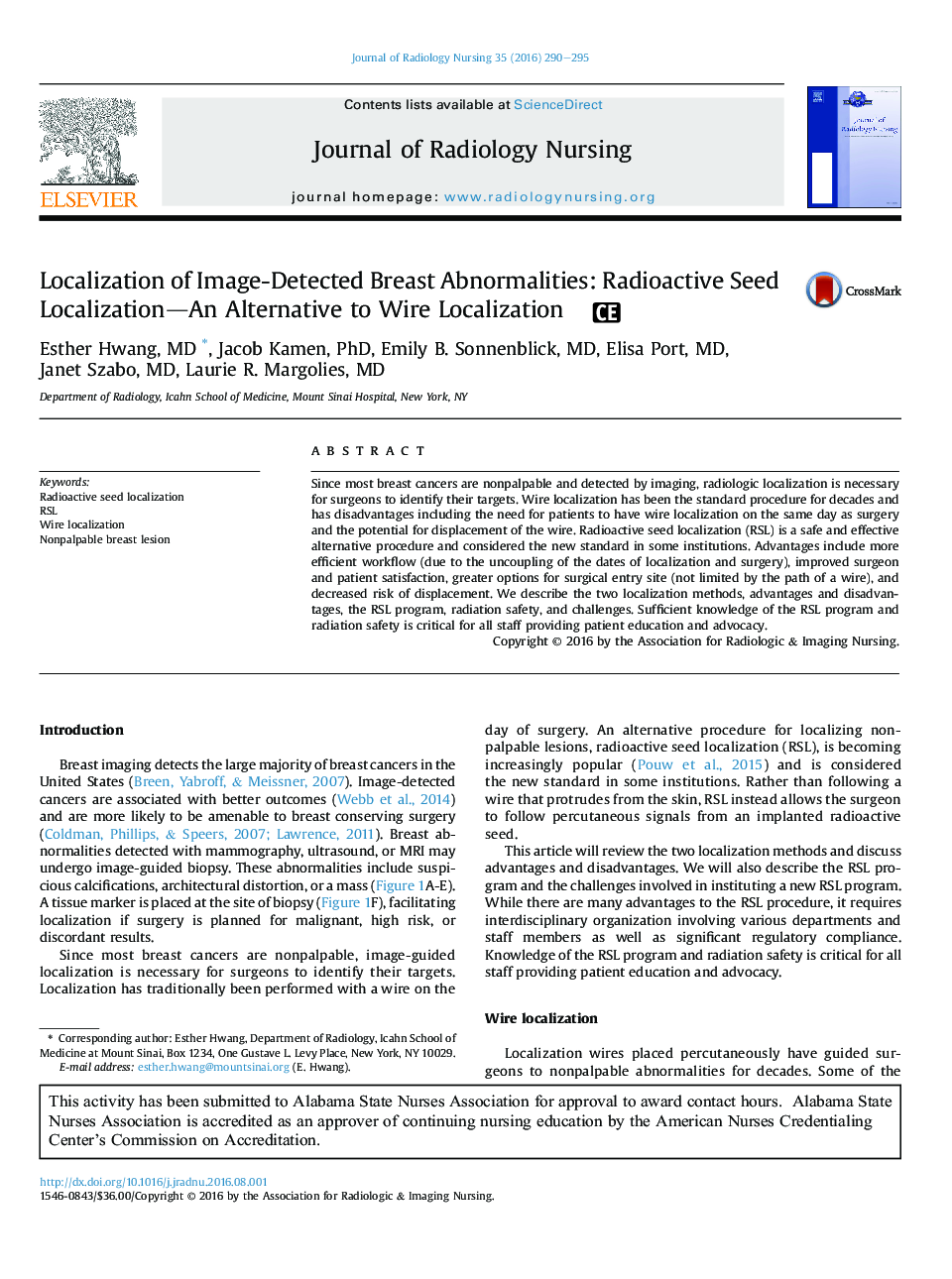| Article ID | Journal | Published Year | Pages | File Type |
|---|---|---|---|---|
| 5570690 | Journal of Radiology Nursing | 2016 | 6 Pages |
Abstract
Since most breast cancers are nonpalpable and detected by imaging, radiologic localization is necessary for surgeons to identify their targets. Wire localization has been the standard procedure for decades and has disadvantages including the need for patients to have wire localization on the same day as surgery and the potential for displacement of the wire. Radioactive seed localization (RSL) is a safe and effective alternative procedure and considered the new standard in some institutions. Advantages include more efficient workflow (due to the uncoupling of the dates of localization and surgery), improved surgeon and patient satisfaction, greater options for surgical entry site (not limited by the path of a wire), and decreased risk of displacement. We describe the two localization methods, advantages and disadvantages, the RSL program, radiation safety, and challenges. Sufficient knowledge of the RSL program and radiation safety is critical for all staff providing patient education and advocacy.
Related Topics
Health Sciences
Nursing and Health Professions
Nursing
Authors
Esther MD, Jacob PhD, Emily B. MD, Elisa MD, Janet MD, Laurie R. MD,
